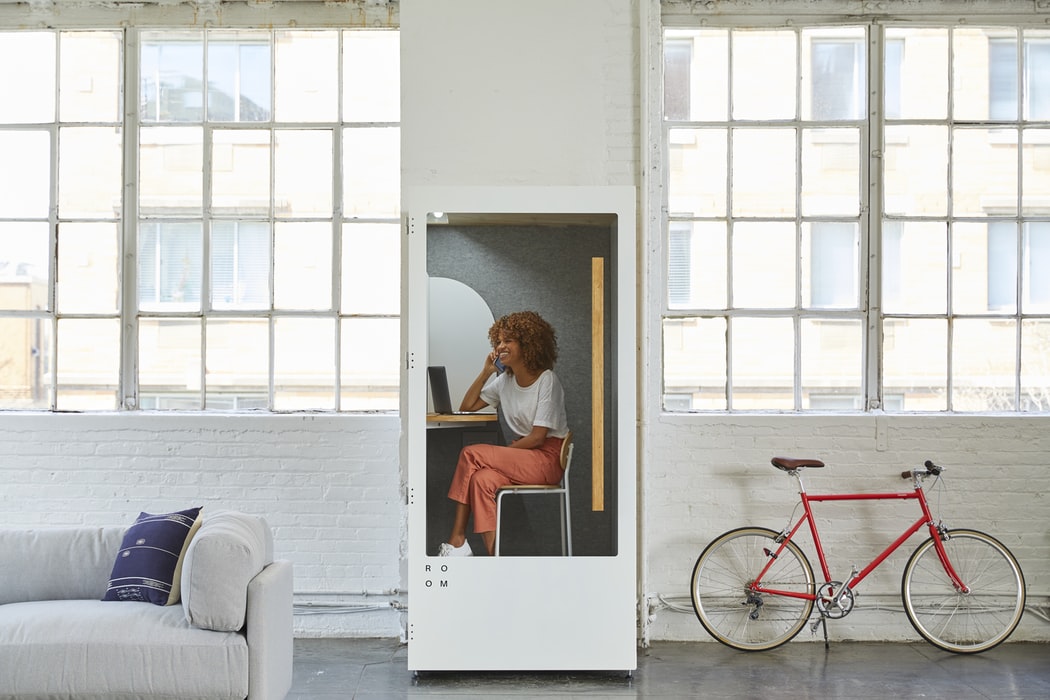
Just a decade ago, if you walked into an office and asked how many people work remotely, you’d be graced by a sea of very puzzled looking faces. But advances in the last few years have meant that working remotely is not only possible, but is increasing rapidly in popularity and showing absolutely no sign of slowing down; in fact, the majority of the US workforce could be working remotely in the next few years.
2020 is set to be a huge year for working away from the office; here are some remote working trends and statistics to prove it!

Full time remote workers are often met with starry eyes when they tell people about their office – not having to commute every day, being able to work wherever and whenever (within reason) you want does indeed seem like the dream.
And for a lot of people, it is; but the reality is that remote work does have a darker side as well.
One of the more surprising remote working statistics is that up to 20% of remote work employees report having loneliness (Buffer, ‘State of Remote Work’) due to limited human interaction throughout the day. This can be multiplied if the person does not have a significant other or lives alone.
Loneliness can be combated, but if not dealt with it can develop into mental health problems like depression. While many studies nod to working remotely being great for stress and anxiety, there are definitely two sides to the story.
Cafes are one of the most popular places for digital nomads to work – so much so that there are articles online about choosing the best coffee shop for a day’s work and have been studies about how working with coffee shop noise can boost creativity.

This is good and bad news for coffee shop owners – who are seeing more customers when the café may otherwise be empty, but possibly finding themselves with not the best quality customers – such as customers who make small purchases and take up a lot of space for a long time.
The solution to this is for cafes to become both remote worker friendly and profit-savvy. Some cafes are adding more power outlets and increasing WiFi speeds, but setting the WiFi up so it logs out every couple of hours, enforcing customers to go up to the counter and make another purchase. Others are establishing ‘no laptop hours’ when the café gets busier.
In the modern remote worker climate, we need people to have more and more digital skills. The talent pool is becoming wider, so employers have more options when it comes to hiring talented workers (this is one of the amazing advantages of remote working for employers).

Therefore, people wanting to become specialists in digital fields will have a lot of luck in the remote work sector.
Of course, with the varying networks that will be used in the workplace, cyber-attacks will become more common. The answer to this is simple – increase cyber security.
There are various ways to protect your employees against cyber security attacks, including monitoring company devices in your employees’ possession, setting up a secure server, and making sure employees know exactly what to do in terms of cyber security.
Part of the hiring process should be ensuring that employees are trustworthy and unlikely to carry out cyber attacks. Getting reliable references for your employees is a good way to ensure this.
Remote working technology has developed substantially over the years, and is only set to become more intricate and complex. For example, take interactive displays. They can easily connect remotely to laptops and tablets; meaning that you only need one ‘headquarter’ room where it is installed, and from here teams can flawlessly communicate wherever they are in the world.
Along with hardware, software is likely to develop greatly over the next few years. People are going to want the most flawless technology that allows teams to seamlessly communicate and integrate.

New software tools for remote work include Trello, Google Drive and Slack, and these models are being updated and new ones are released all the time. This is one of the remote work trends in 2019 that shows no sign of slowing down.
Because the talent pool of remote workers is so much larger (some people are no longer employing city-wide, but now hiring worldwide teams!), employers will be wanting a team who are niche in what they do.
This means that more people will be needing to specialize in a certain area, rather than being a ‘Jack of all Trades’. Employees who are looking to work remotely will need to remember this, and it will also be important to have relevant qualifications and experience in their niche.
Generation Z are the new millennials – and while millennials expect certain things in the workplace, like more technology in the workplace and flexibility, Generation Z are predicted to take these expectations even further.
The people of Generation Z are loosely defined as those who were born between the years of 1996 and the early 2000s, and they are a generation who was brought up with technology. They know technology best, and are likely to have more digital skills than older employees.

They also are more likely to expect remote work opportunities, meaning that as this generation grows up and begins employment, the trend that is remote work will show no sign of slowing down.
This report states how IBM managed to save $50 million in real estate costs when it moved to a more remote workforce and allowed more people to work from home; the average savings per teleworker is $10,000 per year.
More businesses will realise this which will see even more of a move towards remote work. This is one of the most notable remote work benefits to employers, as the savings can be colossal and it is also an environmentally friendly way to run an office.
Many people live in or close to a city for work. So what happens when you take work away?
Employees no longer need to live close to the city.
In the US, towns are actively encouraging people to move back to rural areas and small towns rather than live in the cities now; nine rural areas in various states included Missouri, Oregon and Minnesota have been selected to be developed into ‘hubs’.
These towns have high-speed broadband and great real estate value. If this development experiment is a success, many more rural US towns could follow suit and be redeveloped into virtual business hubs.
For the regional towns that the world seemed to forget about when technology was invented, the future is very exciting.

The remote work boom is upon us, and it is certainly not going to end all time soon. While the concept of remote working is still in its infancy, it is a great idea for businesses of any size to think about how remote working can integrate into their work style and how it can benefit both their employees and the company as a whole.
Things that are important for the employer to consider are whether they have the right hardware and software and cyber security measures in place. They might also want to think about their hiring process, and how they can use the wide pool of employees to their best advantage.
Employees should think about how to combat loneliness when working remotely, as well as gaining digital and/ or niche skills, and how they will stand out from the new generation of employees. They may also want to think about where they would like to base themselves when working remotely, as living in the city is no longer essential.
Society in general will become more adaptable to remote workers; whether that be having more coffee shops that are open to those working on their laptop, or revitalising rural towns to become rural work hubs.
There is definitely set to be a lot of change, but there are huge benefits of remote working for employers, employees and society alike.
Keep up to date with all the latest from Avocor and partners and get information on upcoming events and exciting product news.

Speak to one of our product specialists and find the perfect solution for you.